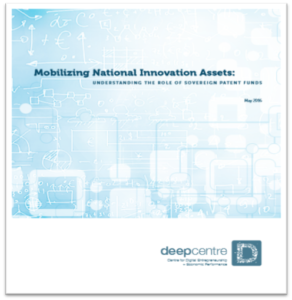 Sovereign patent funds (SPFs) are increasingly influential – and controversial – players in global IP markets. Collectively, SPFs now hold thousands of technology patents and are engaged in licensing and litigation activities worldwide. But despite their prominence, many questions about these funds remain unanswered. What types of assets have these funds acquired, and from where? What is their litigation track record? Are these funds really state-sponsored patent trolls – as some commentators have alleged – or are the models more complex and diverse?
Sovereign patent funds (SPFs) are increasingly influential – and controversial – players in global IP markets. Collectively, SPFs now hold thousands of technology patents and are engaged in licensing and litigation activities worldwide. But despite their prominence, many questions about these funds remain unanswered. What types of assets have these funds acquired, and from where? What is their litigation track record? Are these funds really state-sponsored patent trolls – as some commentators have alleged – or are the models more complex and diverse?
Our new paper seeks to answer these questions by examining the holdings and transaction histories of these funds in global IP markets. Focusing on the three most established SPFs – France Brevets, South Korea’s Intellectual Discovery, and Japan’s IP Bridge – the paper leverages data drawn from major patent offices alongside a review of each
fund’s litigation activity to develop a clearer and more granular
understanding of their objectives and strategies.
At the most basic level, the paper provides new empirical data to help foster more proactive debate on SPFs. We now know, for example, that existing SPFs hold the majority of their assets in the form of US patents, and that these funds have adopted a cautious approach to litigation. As a result, we see little justification for labeling these funds as ‘state-sponsored patent trolls.’
Moreover, despite commonalities among the funds, our analysis highlights the diversity of existing SPFs with respect to purpose, structure, and strategies. Japan’s IP Bridge, for example, has been heavily engaged with the country’s large national technology champions, acquiring ‘dormant’ IP through a small number of large transactions. In contrast, France Brevets has placed more emphasis on engaging with smaller firms and individuals via sub-licensing agreements. Finally, South Korea’s Intellectual Discovery has been the most active SPF with respect to direct patent acquisitions.
While it is still too early to definitively assess the relative success of the SPF model, we are growing increasingly convinced that these funds represent a potentially useful strategic approach to addressing national IP challenges. For countries considering the creation of a national SPF, our findings here suggest that policymakers must be particularly attentive to matching means to ends, with an eye to constructing institutions that are fit for purpose and appropriately calibrated to achieve clear sets of policy objectives.
For those interested in reading further, my previous paper on SPFs, published in 2014, is also available here.